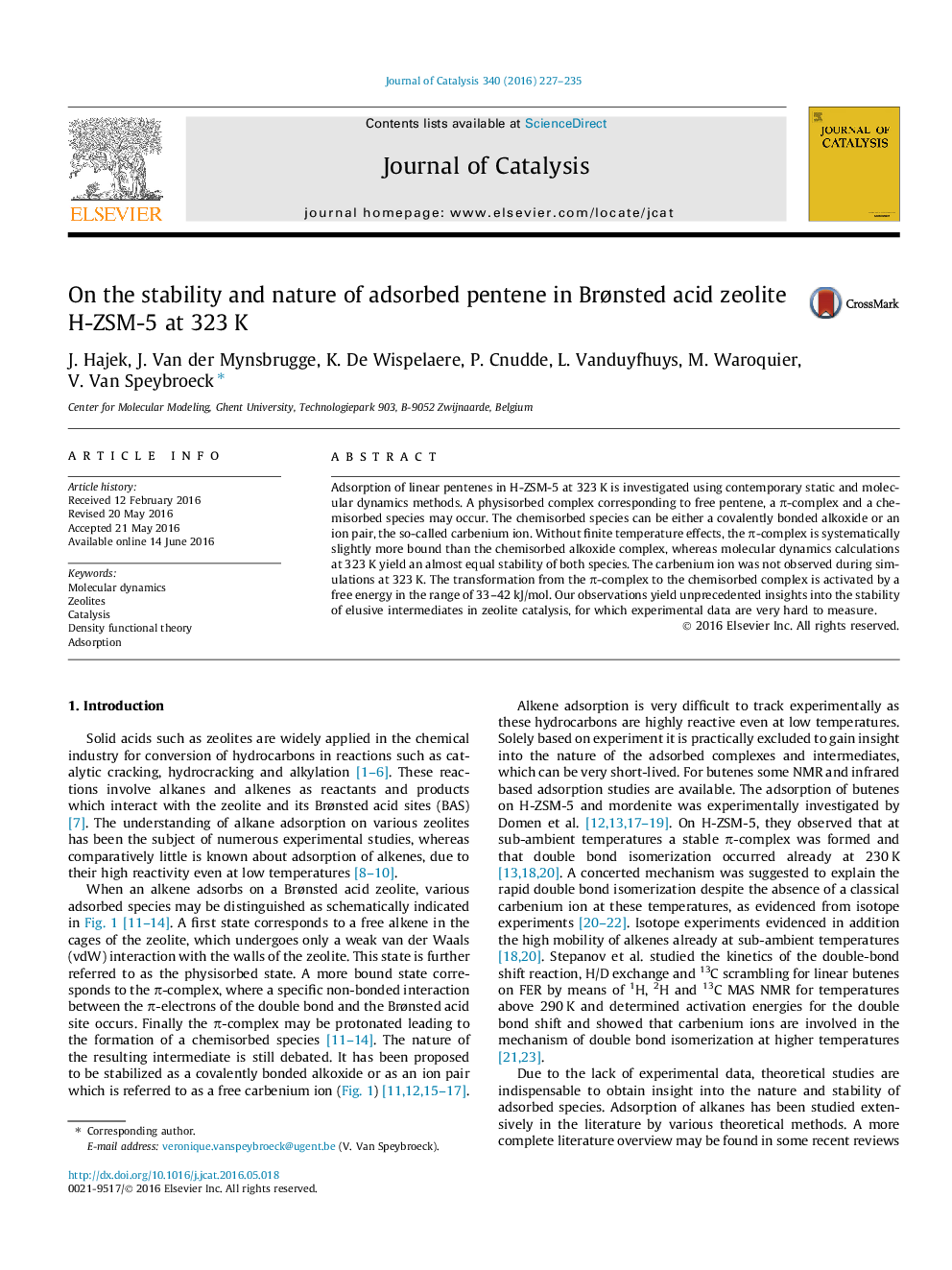| Article ID | Journal | Published Year | Pages | File Type |
|---|---|---|---|---|
| 60524 | Journal of Catalysis | 2016 | 9 Pages |
•Adsorption of linear pentenes in H-ZSM-5 at 323 K yields an almost equally stable π-complex and covalently bound alkoxide.•The transformation from the π-complex to the chemisorbed complex is activated by a free energy in the range of 33–42 kJ/mol.•The stability has been unravelled by contemporary static and dynamic first principle methods.•Theoretical calculations can predict the stability of elusive and reactive intermediates in zeolite catalysis.
Adsorption of linear pentenes in H-ZSM-5 at 323 K is investigated using contemporary static and molecular dynamics methods. A physisorbed complex corresponding to free pentene, a π-complex and a chemisorbed species may occur. The chemisorbed species can be either a covalently bonded alkoxide or an ion pair, the so-called carbenium ion. Without finite temperature effects, the π-complex is systematically slightly more bound than the chemisorbed alkoxide complex, whereas molecular dynamics calculations at 323 K yield an almost equal stability of both species. The carbenium ion was not observed during simulations at 323 K. The transformation from the π-complex to the chemisorbed complex is activated by a free energy in the range of 33–42 kJ/mol. Our observations yield unprecedented insights into the stability of elusive intermediates in zeolite catalysis, for which experimental data are very hard to measure.
Graphical abstractFigure optionsDownload full-size imageDownload high-quality image (72 K)Download as PowerPoint slide
